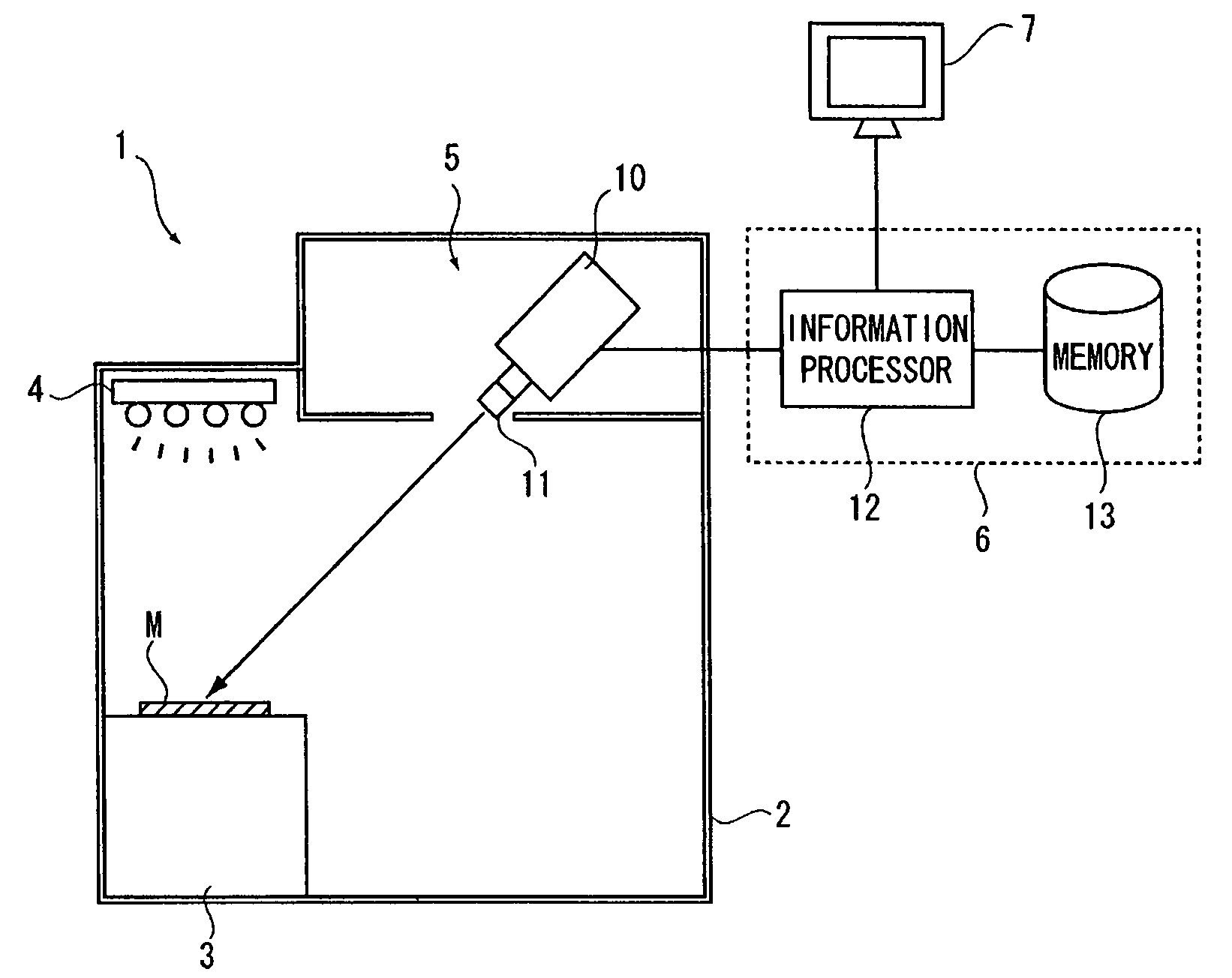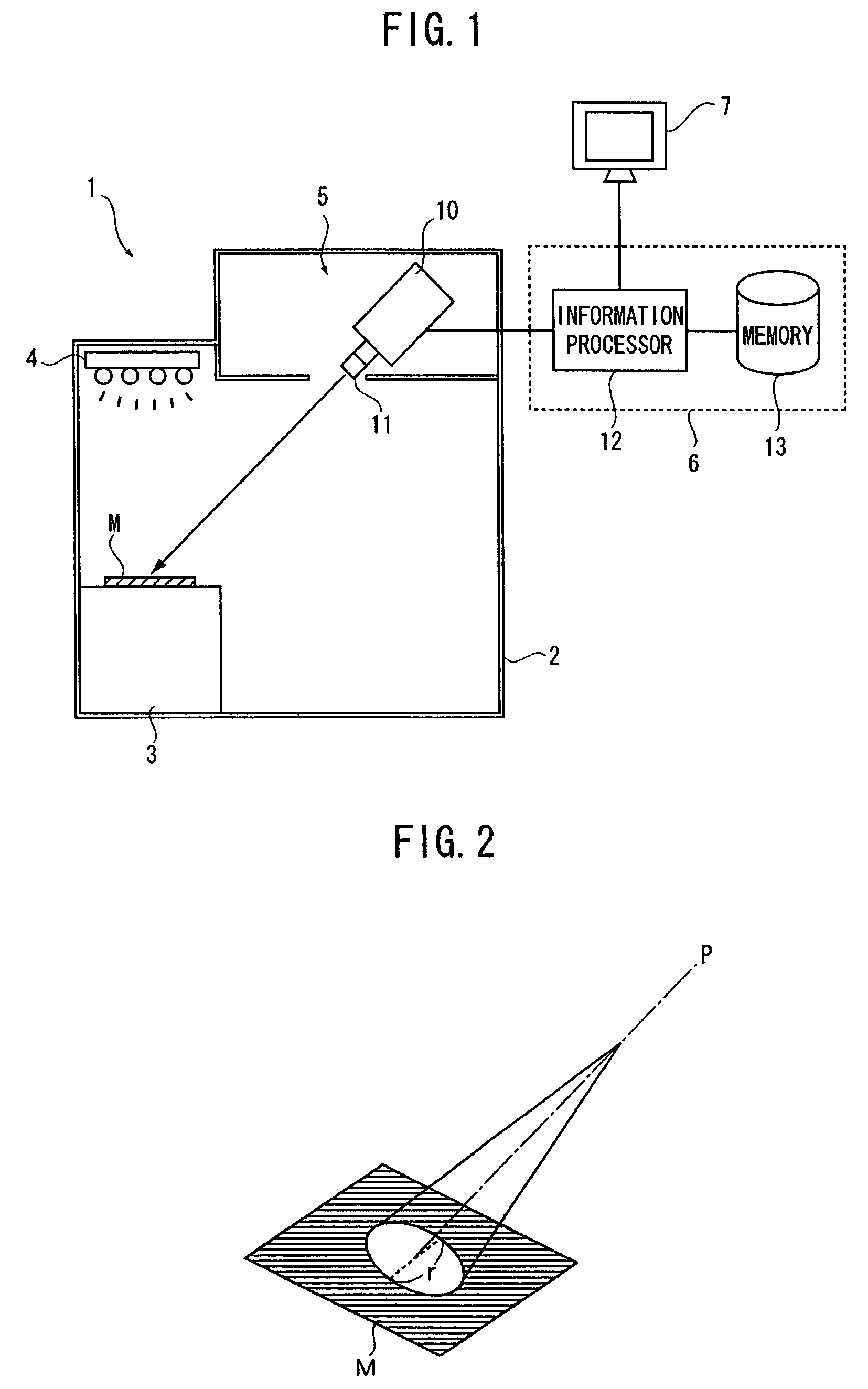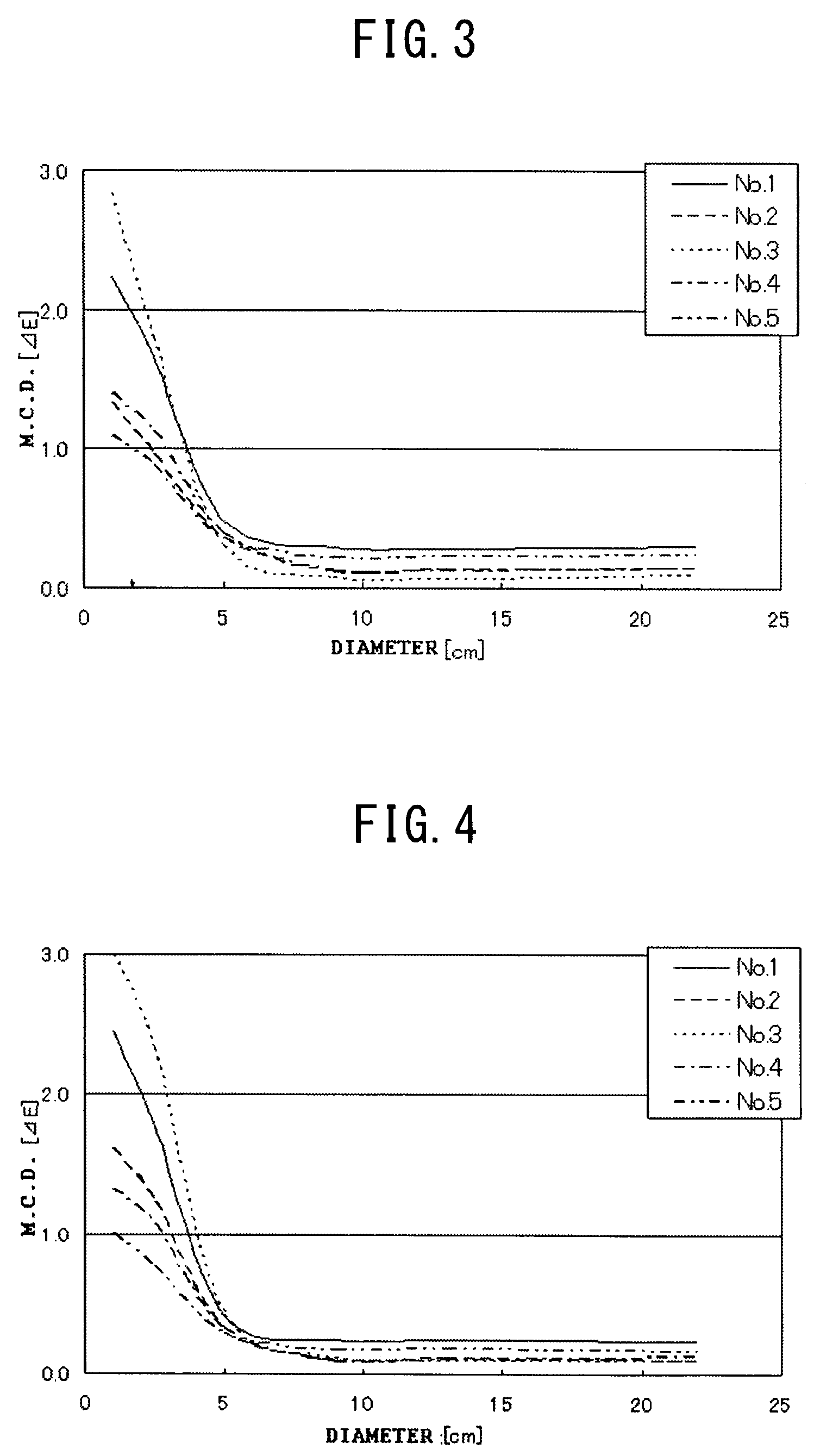[0013]It is therefore an objective of the invention to provide a color inspection system capable of not only enhancing the accuracy in inspection / determination, even in the case of inspecting various textile products as targets for inspection, such as a raised cloth, a cloth with printed patterns such as a marbled pattern, moire pattern and detailed pattern, and so forth, or a cloth with asperities formed on the surface thereof but also making a more accurate determination by the joint use of a visual inspection conducted in the same inspection environment.
[0015]The color inspection system according to the invention is made up as described above, and in particular, the measuring unit thereof employs the spectroradiometer, so that the measurement can be made with the system disposed at a position away from the measurement target. By setting a color inspection environment equivalent to a visual inspection and setting the measurement
diameter not less than 7 cm, it becomes possible to make an accurate measurement, even on patterned products and textile products subjected to a raising treatment, without being affected by color differentiation due to patterning, and asperities on the surface thereof. The spectroradiometer is an instrument for measuring spectral
radiance energy distribution of light (electromagnetic
waves) from the measurement target, and is used mainly for measuring
radiation light from an illuminant, such as the
fluorescent lamp, by the
wavelength. However, with the present invention, the spectroradiometer is used for measurement of an object-color, that is, measurement of reflected light shone on an object to be selectively reflected from the surface of the object. Further, various experiments have been carried out resulting that it is possible to obtain results of determination on pass or failure of color, more accurate than in the case of the visual inspection if the spectroradiometer is used in color inspection of measurement targets such as textile products of various types in color shade and form. The
colorimeter, and spetrophotometer, used in the past, are useful in carrying out
color measurement of an object
colored in a single color and relatively flat in
surface shape. However, because those instruments need to make a measurement in close proximity to the measurement target, there is a likelihood of a deterioration in
measurement precision in the case of the inspection of patterned objects and objects subjected to the raising treatment. Accordingly, color inspections with the use of various instruments have been tested obtaining information that, in the case of the spectroradiometer, noncontact inspection in a large area can be conducted, and a color shade as a whole can be measured at a position away from the surface of a patterned product and a product subjected to the raising treatment. If an inspection is carried out based on relative evaluation by comparing measurement results with standard values, it is possible to make a determination on pass or failure of color with high precision.
[0016]In this connection, as the spectroradiometer has a narrow measuring region, the same is installed at a position at least several meters away from the measurement target when measuring an object-color. However, by making measurement through the intermediary of the wide range lens, the measuring region thereof, at a position close to the measurement target, can be enlarged. Further, by setting the measurement
diameter of the spectroradiometer, on the measurement target, to not less than 7 cm, more accurate measurement results having little variation can be obtained. Still further, by setting the illuminant so as to shine a light on the measuring region from the direction substantially perpendicular thereto, and setting the spectroradiometer so as to enable the measurement to be made from a direction inclined at an angle of 45 degrees to the measuring region, it becomes possible to stably obtain substantially the same result as is obtained by visual inspection with the human eyes.
[0017]Furthermore, since the spectroradiometer can make a measurement at a position away from the measurement target, an inspection using the same, in combination with a visual inspection, can be implemented with ease, so that with the
combined use of both the inspections, it is possible to further enhance the precision in inspection through mutual checking of the results of the respective inspections, such as correction of variation in determination by the visual inspection, and visual checking against the results of the determination by the color inspection system.
[0018]With cloths used for automobile interior materials, in particular, asperities are often formed on the surfaces of three-dimensional structures thereof, and printed patterns, such as a marbled pattern, moire pattern and a detailed pattern or the raising treatment are often applied thereto, so that each of the cloths will not appear in a single color showing the color of a constituent material thereof as it is, rendering it difficult to obtain accurate measurement results if a measurement area is small. For this reason, with the cloths described, if respective measuring regions are increased in size to thereby make a measurement on the whole region so as to find a color shade on the average, measurement results with less variation will be obtained. According to the results of experiments carried out by the inventors, in the case of cloths commonly used for the automobile interior materials, by setting the measurement
diameter of the spectroradiometer to not less than 7 cm, it was possible to obtain stable measurement results with respect to variously
colored patterns.
 Login to View More
Login to View More  Login to View More
Login to View More 


